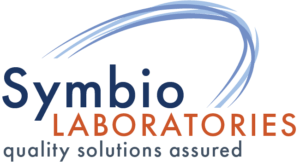What’s New at Symbio?
Comprehensive Overview of Testing Methods and Implications in Relevant Industries
In today’s world, testing methods for various substances and applications play a critical role in maintaining safety, quality, and compliance across numerous industries. This blog post provides a comprehensive overview of different testing methods and their implications in some of the most crucial sectors, including water, wine, supplements, and consumer products.
Lead and copper are common contaminants found in drinking water, primarily due to lead-containing plumbing materials, service lines, and copper tubes. Exposure to high concentrations of lead and copper in drinking water can have severe health consequences, particularly for children. To ensure public health and safety, regulatory agencies, like the Environmental Protection Agency (EPA) in the United States, have established stringent guidelines and testing requirements for lead and copper in drinking water.
Microbial testing helps industries, such as food, beverage, pharmaceuticals, and water, detect and identify harmful microorganisms, including bacteria, fungi, and viruses. Timely detection of microbial contamination is critical in preventing the spread of foodborne illnesses and maintaining product safety and quality.
Various testing methods include culture tests, enzyme-linked immunosorbent assay (ELISA), and polymerase chain reaction (PCR), which allow for precise identification and quantification of pathogenic microorganisms.
Per and polyfluoroalkyl substances (PFAS) are a class of synthetic chemicals known to be persistent, bioaccumulative, and potentially toxic. PFAS can contaminate water sources and subsequently enter the human body, leading to adverse health effects. Regulatory bodies, such as the State Water Board of California, have issued mandates like General Order DW 2022-0001-DDW, requiring public water systems to monitor for PFAS.
To ensure the utmost accuracy, PFAS testing requires laboratories, like Symbio, with expertise in analysis techniques such as Environmental Protection Agency (EPA) Method 533. Essential for protecting public health, industries must stay vigilant against PFAS contamination in the water supply.
The supplement industry is a rapidly growing market, and ensuring the quality, safety, and efficacy of supplement products is a high priority. Several testing methods, like high-performance liquid chromatography (HPLC) and gas chromatography-mass spectrometry (GC-MS), help identify and quantify ingredients and contaminants in supplement products.
Amazon, a significant player in the e-commerce sector, has strict requirements for selling ingestible products on their platform. Testing supplements in compliance with Amazon requirements helps manufacturers and suppliers confidently sell their products, better protecting consumer safety.
Water testing is indispensable in maintaining the safety, quality, and compliance of drinking water supplies. Key parameters monitored under water quality testing standards include:
Physical and Chemical Factors: Color, odor, taste, pH, hardness, turbidity, and dissolved oxygen.
Inorganic and Organic Contaminants: Heavy metals, nitrates, phosphates, and hydrocarbons.
Microbiological Contaminants: Bacteria, fungi, viruses, protozoa, and algae.
Water monitoring and testing are essential across residential, commercial, and industrial settings. It is crucial for protecting the well-being of the public and the environment, allowing for effective mitigation of potential hazards.
Wine, a much-loved beverage, is subject to rigorous testing to ensure quality, safety, and compliance with industry standards. Various tests include evaluating alcohol content, acidity, sugars, contaminants, and additives. Techniques like HPLC, GC-MS, and mass spectrometry (MS) are instrumental in providing accurate wine analyses.
Wine testing offers essential insights into product composition and quality, enabling producers to monitor and improve their products, fostering trust and satisfaction among consumers.
In conclusion, monitoring methods and compliance in multiple industries contribute to a safer and healthier environment for all. Each testing method serves a unique and crucial role in maintaining product quality and safeguarding public health, ensuring that the industries in which they apply contribute positively to a thriving and sustainable future.
